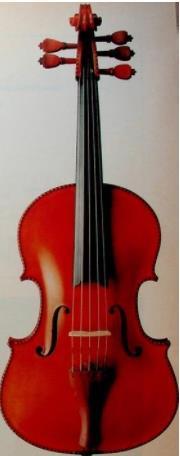In this extract from January 1999, Simon Rowland-Jones shares the challenges encountered when recording Bach’s Cello Suites on viola

This extract is from the January 1999 issue of The Strad. To read the full article, click here

In 1993 I was invited by Meridian Records to record Bach’s Cello Suites on viola. Apart from a recording by Lillian Fuchs on Decca and an incomplete version for Biddulph by William Primrose, who claimed, somewhat surprisingly, that it was impossible to play suite no.6 on viola, there were no other complete viola recordings available at that time. Even the Primrose and Fuchs recordings were difficult to obtain.
My first concern was what to play from. No autograph manuscript from Bach survives and players who approach the suites find themselves confronted by an array or conflicting editions; these extant editions, though brilliantly edited in their own ways, had a tendency to reflect their editors interpretations.
My initial attempt to produce my own edition was not entirely free from similar tendencies, mostly because it was meant to serve as a basic for my performances and recording. However, when Peters Edition expressed interest in publishing my transcription, I felt the need to start afresh, ironing out any idiosyncracies and thereby creating something less personal.
This transcription is the result of a thorough study of all surviving contemporary copies and a detailed comparison of their stylistic characteristics. It aims to reflect Bach’s original intentions, as far as possible, with the minimum of editorial intervention. No fingerings are given, bowings are the logical outcome of my research and all the ornaments that I have incorporated were taken from authentic early copies of the suites. In the absence of an autograph, I hope this edition will serve as something close to the ’Urtext’.
Suite no.6 posed a particular problem. In writing for the five-stringed cello (normal cello plus an additional E string) Bach employs a huge pitch range. The suite can only comfortably be played on a five-string instrument, although most cellists do play it on a normal four-string cello using thumb position to facilitate the higher registers. As thumb position is not possible on the viola, violists normally play this suite in the key of G. This makes passages in the upper register easier, as they are played down a fifth, but it forces compromising transpositions in the lower registers.
I came to the conclusion that, in order to play Suite no.6 as Bach intended, I would have to commission a five-string instrument. I was fortunate to meet Martin Yerizian, a highly versatile and talented Armenian maker who was interested in my project. Six months later a five-string viola was in my possession (left) and I was able to play the suite in Bach’s original key of D.
Read: From the archive: Interpreting Bach
Read: Masterclass: Bach’s Cello Suite no.1 in G major arranged for viola
Read: Did Bach dance? Stylised dance in his solo violin partitas


































No comments yet